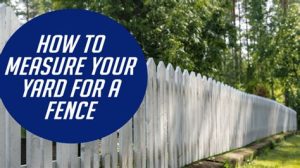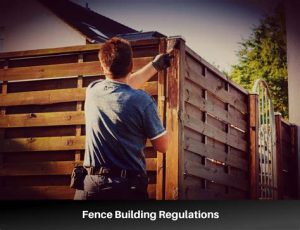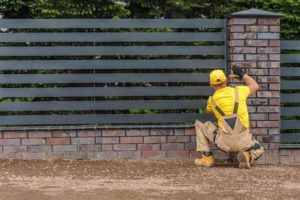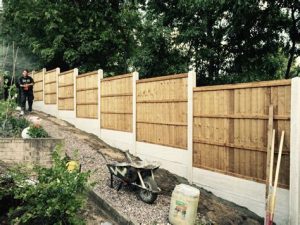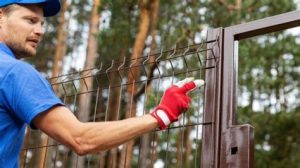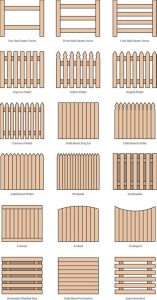Explore essential strategies for overcoming challenges in post installation, from terrain assessment to selecting posts, fittings, and adding tension wire for stability.When it comes to installing chain link fencing, uneven ground can present unique challenges that require careful planning and strategic solutions. Whether you’re enclosing a garden, securing a property line, or creating a play area for children, a properly installed fence is crucial for both functionality and aesthetics. This blog post will explore the specific obstacles posed by uneven terrain, guiding you through a step-by-step process to ensure a successful installation. We’ll cover essential topics such as assessing the terrain, selecting the right posts, utilizing adjustable fittings, and enhancing stability with tension wires. By employing the right techniques, you can achieve a secure and visually appealing chain link fence, even in the trickiest of landscapes. Let’s dive in and tackle these challenges head-on!
Understanding the challenges
When it comes to chain link fencing on uneven ground, there are several inherent challenges that must be addressed. One of the primary issues is the variability in terrain. Uneven surfaces can lead to gaps and uneven tension in the fence, compromising its structural integrity and effectiveness.
Another challenge involves the installation process. Without proper planning, installing a chain link fence on irregular ground can result in poor alignment and a less aesthetically pleasing appearance. This can also lead to future issues with maintenance and durability.
Climate and weather can further complicate these challenges. For instance, heavy rains and flooding can erode the soil and affect the foundation of the fence. Understanding these environmental factors is crucial to ensuring that the fence remains stable and functional.
Assessing the terrain
When it comes to installing chain link fencing, assessing the terrain is a critical first step, especially when working on uneven ground. Understanding the unique characteristics of the terrain will allow you to tailor your installation approach for optimal results.
The first aspect to consider is the topography. Is the ground sloped, rocky, or filled with vegetation? Mapping out the highs and lows will help determine how much adjustment will be necessary for your posts. For sloped areas, you’ll need to decide whether to follow the contour of the ground or to create a straight line, which can impact the overall aesthetics and functionality of the fence.
Next, evaluate the soil condition. Is it sandy, clayey, or rocky? Each type of soil offers different challenges when it comes to installing fence posts. For instance, sandy soil may require deeper holes to ensure stability, while rocky soil might necessitate the use of specialized tools to create the proper footing for your posts. Additionally, understanding where water may gather or drain will help in preventing future issues with the integrity of the fence.
Lastly, consider any existing structures or obstacles in the area, such as trees, rocks, or buildings. These must be accounted for when planning your fence layout to avoid unnecessary complications during installation.
Selecting the right posts
When it comes to constructing a chain link fence on uneven ground, selecting the right posts is crucial for ensuring stability and durability. The posts serve as the backbone of the fence, providing the support necessary to maintain its structure, especially in challenging terrains.
It’s important to consider the material of the posts. Options typically include galvanized steel, aluminum, and redwood. Galvanized steel is often favored for its strength and resistance to rust, making it a long-lasting choice. Aluminum is lighter and resistant to corrosion, but may not offer the same level of strength for taller fences. Meanwhile, redwood provides a classic aesthetic but can require more maintenance over time.
Another factor to weigh is the diameter and depth of the posts. Larger diameter posts can provide greater stability; typically, a diameter of 2-3 inches is recommended for residential fences. Furthermore, posts should be set at least one-third of their length into the ground to ensure adequate anchoring, which becomes especially important when navigating uneven terrain.
Using adjustable fittings
When installing a chain link fence on uneven ground, using adjustable fittings becomes crucial for achieving both stability and functionality. These specialized fittings allow for flexibility in installation, accommodating variations in ground height and slope.
Adjustable fittings come in various types, including corner posts, line posts, and top rails, all designed to adapt to irregular terrains. They help maintain the fence’s structural integrity while providing an aesthetically pleasing appearance.
- Enhanced Flexibility: Easily adapt to changes in terrain without compromising fence height.
- Improved Stability: Allow for better anchoring in the ground, essential for areas with loose soil.
- Simplified Adjustments: Make it easy to modify tension and alignments as needed during installation.
By using adjustable fittings, such as those from reputable manufacturers, you can ensure your chain link fencing project not only meets your aesthetic requirements but also withstands the challenges posed by uneven ground.
Adding tension wire for stability
When installing a chain link fence on uneven ground, adding tension wire is an essential strategy to improve the overall stability and lifespan of the fence. Tension wire provides a robust support mechanism, preventing the fabric from sagging and ensuring that it maintains its integrity over time.
The primary function of tension wire is to enhance the strength of the fence structure. By securing the bottom of the fence fabric to the ground, it minimizes the risk of the fabric being pushed down by external forces such as soil movement or animal activity. This is especially critical in areas prone to erosion or shifting soil.
- First, ensure that the fence posts are properly set and secured.
- Unroll the tension wire along the bottom of the fence fabric, making sure it is taut.
- Using wire ties or metal clips, attach the tension wire to the chain link fabric, spacing them evenly for maximum support.
- Finally, secure the ends of the tension wire to the terminal posts, ensuring a firm connection to prevent sagging.
Incorporating tension wire into your fencing project not only bolsters the fence’s resilience but also enhances the overall aesthetic by maintaining a neat appearance. Ultimately, this simple addition can help in prolonging the life of your chain link fence on uneven surfaces.
Frequently Asked Questions
What are the main challenges of installing chain link fencing on uneven ground?
The main challenges include maintaining a consistent height, ensuring stability, and preventing gaps that can result from uneven terrain.
What are some effective methods to level the ground before installation?
Some effective methods include using a shovel to fill in low spots, using a rake to level out the area, or bringing in gravel or soil to create a more even surface.
Can I install chain link fencing directly on uneven ground?
While it’s possible, it’s not recommended as it may lead to instability and misalignment. Proper leveling or adjustments to the fence design are essential for longevity.
What materials can I use to support a chain link fence on uneven ground?
Materials like concrete, wooden posts, or pre-cast concrete blocks can provide stable support and help anchor the fence securely.
How can I adjust the height of the fence when the ground is uneven?
Adjust the lengths of the posts by cutting them to different heights or using adjustable post caps to accommodate various ground levels.
Is it advisable to hire a professional for this type of fencing installation?
If you’re unsure about how to handle uneven ground or if the installation seems complex, hiring a professional can ensure it’s done correctly and safely.
What maintenance tips should I follow after installing chain link fencing on uneven ground?
Regularly check for any shifts in the fence, ensure the posts remain secure, and address any erosion or new unevenness in the ground promptly.
